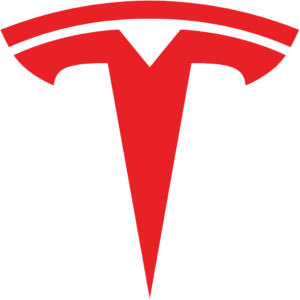****Masks and Social Distancing.
We all have had to become familiar with social distancing during the past few months as the COVID-19 pandemic runs its course through the US and the world. But isn’t that what traditional US and rest of world auto OEMs have been doing forever? As I mentioned briefly in a previous blog, auto dealers are the masks that provide the social distancing — a buffer between the OEM manufacturers and their end user customers. Mainly the dealer keeps the OEM from having to deal directly with customers and their complaints. The unfortunate side of such isolation is that the dealers mask vehicle problems, innovative ideas, and genuine customer wants/needs from reaching the OEMs’ senior management in an unfiltered way, if at all.
Things are different at Tesla where there are no separate dealer franchises. Every Tesla showroom is Tesla’s, not an intermediate’s, however well intended. In addition, Elon Musk takes advantage of Twitter to bypass the press and communicate directly with Tesla customers and followers. He often responds personally to information and vehicle improvement requests from customers. This is a huge benefit to Tesla in enhancing customer relations and ensuring rapid reaction to vehicle problems and other customer inputs. Traditional OEM CEOs miss this opportunity to more closely impact and react to their customers or potential customers. It seems like they don’t want to catch any “diseases” in the form of direct ideas or complaints from their customers. Sorry, there’s no vaccine for such management arrogance and disinterest.
****Tesla’s Full Self Driving (FSD) capability – three quick points.
As of April 27, 2020, there are an estimated net 552,786 orders for Tesla’s Cybertruck, representing a minimum of $35.1 Billion in Tesla revenue potential. One fascinating item about those orders is that 81.3% of them include Tesla’s FSD option! Seems like Tesla’s Cybertruck potential customers (many of whom already own one or more Teslas) know a good feature and value when they see it.
Tesla keeps raising the price of their FSD option, generally about $1,000 per year. On July 1, 2020, the price of this rapidly evolving option will increase to $8,000 from $7,000 – reflecting the value of additional features embedded in FSD during the past year. Elon Musk forecasts that when FSD is here in “full”, enabling autonomous driving and Robotaxis, the value of Tesla’s FSD option — and someday the price — will be worth three to four times today’s price. More specifically, Musk recently tweeted that at the point where FSD has full self-driving capability with regulatory approval, “the value of FSD is probably somewhere in excess of $100,000.”
Recently, common sense and the Tesla grapevine has it that in addition to FSD being sold as a one-time option either at vehicle purchase or as an over-the-air (OTA) update, FSD may also be offered on a subscription basis. This would be a great way to introduce Tesla owners to the package. For instance, an owner might be taking his family on a long-distance vacation trip where Tesla’s FSD would not only relieve the driver of considerable burden, but also offer a much safer journey than if anyone in the family drove. Since the FSD capability can be switched on and off remotely by Tesla, one could rent the package for any given time or mileage scenario. Tesla knows full well that once its FSD feature is used for a while, no owner will want to part with it. No other auto manufacturer but Tesla can offer its customers a functionality feature of this capability on either a trial basis, or merely a convenience basis.
****Vehicle-to-Grid (VTG) and Tesla’s Autobidder energy transfer.
We know that batteries can be used to temporarily store excess energy from the electrical power grid and return it to the grid when energy demand on the grid increases. A fine example of this is Tesla’s Hornsdale Power Reserve’s 185 MWh battery storage unit installation in South Australia. Tesla’s industrial and commercial Powerpacks used there are available in sizes from 100 to 210 kWh and are infinitely scalable. On a smaller scale, Tesla’s home Powerwall can store 13.5 kWh of energy and smooth out home power demand and use.
Vehicle-to-Grid (VTG) refers to when a vehicle’s battery is used to store energy from the grid, and then is capable of returning excess energy back to the home or grid when needed, again to smooth out the energy supply/demand curve. Some electric vehicles such as Nissan’s Leaf and e-NV200 van were designed from the outset to have this VTG capability. Tesla has never had VTG, despite some rumors that flew a few days ago on various blogsites and YouTube video channels.
Musk and Tesla engineers were concerned that VTG would expose a Tesla’s battery to too many charge/discharge cycles, prematurely degrading the battery. Typical charge/discharge cycle design limits on Tesla’s current lithium-ion battery cells are around 400 to 500 cycles. With the expected announcement of Tesla’s new battery cell technology – perhaps more than one version – Tesla has publicized an expected one million mile battery(s?) that should last for some 3,000 charge/discharge cycles at a minimum. This improvement will open the door to Tesla offering VTG capability in their future vehicles as such a change will require some changes in electronics hardware at a minimum.
The reason VTG is so attractive to future Tesla owners (or any EV owner) is that they can buy electrical power for their vehicles when electricity prices are low, and sell that power back to the grid when prices are high and electricity is in peak demand, such as from 4 PM to 10 PM in the evenings. It is particularly useful in a home powered (in part at least) by solar power with an in-house storage battery such as Tesla’s Powerwall. When local grid/house power goes out for some reason (with or without a Powerwall battery), EV owners with VTG capability could plug in their vehicle at home and deliver electrical power from their vehicle back into the home for at least a day or two. A typical home consumes about 30 kWh a day or about 914 kWh a month.
Tesla has developed and is using a new AI-based electrical energy trading and control software platform called Autobidder. Based on machine learning and optimization, this tool can be used by power generation experts and traders to forecast market prices, power grid loads, and power generation scenarios. It can also perform dispatch optimization (turning on/off extra power reserves such as a peaker plant) and smart bidding on additional energy requirements. This software is used to – yup, you guessed it – buy low and sell high, while balancing electrical power supply/demand over any electric “grid” from home-sized to regional power grids including what have become known as Virtual Power Plant (VPP) grids. Two places out of many that Tesla is currently using this software are at their Hornsdale Power Reserve installation and in conjunction with Green Mountain Power/Peck Electric across hundreds of homes around Rutland, Vermont.
Consider that the average Tesla electric vehicle has a 75 kWh battery. Tesla’s Powerwall charger that can be installed at home comes in 13.5 kWh units. Some homeowners have up to four of these installed. But note that Tesla has over one million average 75 kWh vehicle batteries available to them if their Tesla vehicle owners choose to participate in its forthcoming energy trading business. Thus Tesla could move electrical energy in and out of those individual vehicles at various times of the day or night, and depending on the arrangement allow the vehicle owner to make money selling energy (at a higher price than they paid for it) back to their grid on a daily basis. Currently, Tesla’s rapidly increasing customer fleet thus represents a giant rolling storage battery of 1,000,000 vehicles X 75 kWh per vehicle equals 75 million kWh or 75 GWh of capacity – an entire electric powerplant on average! For comparison, the average daily output of a typical electrical power plant is 60 GWh or 60,000 MWh, or 60,000,000 kWh. Even if Tesla could tap one half of its customers’ vehicle base, that’s a huge amount of power to be able to use to smooth out electrical supply/demand over any time of day in any weather condition across any VPP. Not only will Tesla vehicle owners make money, but Tesla will get a cut of the profits from this business as well.
For more detail on this emerging VTG development and science, Zac and Jesse at Now You Know (one of the top YouTube EV channels IMO) presented one of their very best shows on this VTG subject here. Viewing their 41 minute video can more thoroughly explain VTG than I can in this limited blog space.
VTG has a great future, especially when combined with wireless transmission of electrical energy to and from a vehicle. That will eliminate the physical need to be plugged in through a cable for the energy exchange. All you would have to do is position your electric vehicle over a wireless (induction) charging plate, assuming you had receiving/sending capability designed into your electric vehicle. This technology is currently being used to charge city buses today, in the US and around the world. Some installations charge from the pavement level, and some charge from overhead induction units.
Photo courtesy of Pixabay
Your feedback in the form of comments or suggestions are welcome in the comment window. Thank you for following my blogs on this site and for participating in my blogging community.
These Eye Catcher Updates are posted roughly on a weekly basis, as I attempt to keep up with the flood of developments in the electric vehicle, solar, and energy industries, as well as the general transportation industry.




